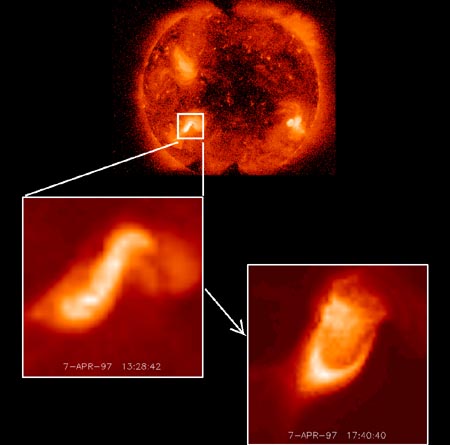Sigmoids Predict Solar Eruptions

Explanation:
On the
Sun, S marks the spot. Solar explosions have been
discovered to explode preferentially from
regions marked with this letter.
The
surface of the quiet Sun
is a maze of hot gas and flowing
magnetic fields.
When two regions of high magnetic field strength
approach each other, they typically pass uneventfully.
If the two regions pass close enough and in
just the right way, however, an
X-ray bright
S-shaped region called a sigmoid
forms and quickly explodes in a
Coronal Mass Ejection (CME).
Astronomers conjecture that in the center of the sigmoid,
a circuit closes that somehow drives the explosion. The
above picture shows the
Sun in X-ray light.
A pre-
CME
sigmoid is shown on the left inset image, while a
post-
CME arc is shown in the right inset.
Authors & editors:
Robert Nemiroff
(MTU) &
Jerry Bonnell
(USRA)
NASA Web Site Statements, Warnings,
and Disclaimers
NASA Official: Jay Norris.
Specific
rights apply.
A service of:
LHEA at
NASA /
GSFC
& Michigan Tech. U.

